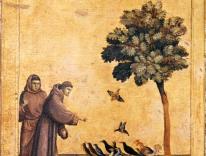I first discovered New Orleans at seventeen, in the summer of 1951. I had been fired from my job with the Smith, Brown, and Root Construction Company (now a subsidiary of Halliburton) after only two weeks of lugging railroad ties between Anchorage and Fairbanks, Alaska, because I was too young to work overtime. I was probably lucky.
So I did what any Jesuit prep-school graduate would do; I wired home for money. Then I took a Trailways bus across country. In the South, I saw my first COLORED drinking fountains, heard a fellow passenger blurt, “I ain’t sittin’ next to no nigger,” and, in New Orleans searched out the Court of Two Sisters, a famous garden restaurant my mother had told me about.
When I returned to New Orleans in 1986 as a journalism professor at Loyola University, the city was legally integrated, but much of the white middle class had relocated to Metairie, Jefferson Parish, a vast suburb that stretches west from the city to the airport. For the next ten years, my immediate world was the Garden District. Its lovely antebellum homes figure in the novels of Walker Percy and Anne Rice; Jefferson Davis was born there; and both Loyola and Tulane universities snuggle side by side on St. Charles Avenue.
I explored the city on long runs along the levees and on bike rides north to Lake Pontchartrain and southeast along the Mississippi to Chalmette, where Andrew Jackson “won” the War of 1812 and then returned to St. Louis Cathedral at the heart of the French Quarter to give thanks, the same church where John Paul II greeted the city’s clergy in 1987.
To most of America, New Orleans is a playground: pricey restaurants, Mardi Gras, the Jazz Fest, and the plantations with their cathedral-like corridors of century-old live oaks standing guard over the sacred past.
But Mardi Gras repelled me, not for the sexual shenanigans, but for the parades where the social elite rode like royalty on floats and tossed plastic trinkets to the common people who called out, “Throw me something, mister!” and groveled in the gutter for the junk. In the late 1990s, when the New Orleans City Council finally refused to give parade permits to krewes (Mardi Gras clubs) that failed to integrate, some of the clubs moved their parades to Metairie so they could carry on their racist traditions.
On Sunday mornings, with a sprightly elderly nun and a blind guitarist, I would say Mass at the city jail. Our challenge was to get into the cell block, clean off the table to set up an altar, cut the eucharistic prayer to a few minutes, preach, sing “Jesus on the main line. Tell him what you want. Call him up and tell him what you want,” give Communion to literally everyone, distribute rosaries, hear confessions, and get out within twenty-nine minutes. With few exceptions, the prisoners were black. The showers and toilets were a few feet from the altar, and the roar of a flush punctuated the prayers. A woman inmate asked me to take a message to her son. Where? In the same prison, two floors down.
The aftermath of Hurricane Katrina was a vision from Brueghel: the corpses wrapped in sheets and plastic bags; the old and the sick being hoisted skyward by helicopters from their shattered homes, their precious belongings reduced to trash. I thought of all the joy America had sucked out of New Orleans and how little the nation, represented by our leaders, had cared. In a sense, the people of the Gulf Coast may have done us a service in their suffering, laying bare the ugly fact of how much this “one nation” has become, at an accelerated pace, two. It is a result of deliberate policies: to fight an unnecessary war to satisfy the ambitions of those who started it, to allow the middle and lower classes to pay the taxes and risk their lives. And Halliburton will make money from the contracts to fix the dikes.
In 1996, I left New Orleans because “I didn’t want to die there,” meaning, I didn’t want to go into my seniority a thousand miles away from my family and my oldest friends. Still, I have returned again and again to renew my love for the city and my friends in that beautiful place. It never occurred to me that New Orleans might die before I do.
Please email comments to [email protected] and join the conversation on our Facebook page.
Share
Previous Story
The Mother of Beauty
Next Story
LETTERS

